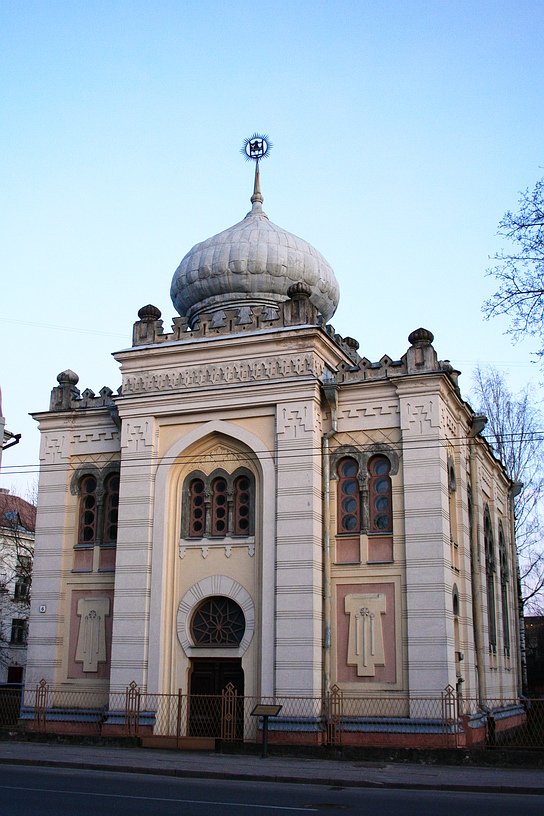Vilnius, the capital and largest city of Lithuania, is located in the Lithuanian Lake District at the confluence of the Vileika and Neris Rivers. It was the historic capital of the Grand Duchy of Lithuania and later one of the major cities of the First Polish Republic. Already during the First Polish Republic, Vilnius, alongside Kraków and Lviv, was home to one of the most important Polish universities, founded in 1579 by the Polish King Stefan Batory. Vilnius University was the second oldest Polish university, after Kraków University, founded in 1364, and before Lviv University, founded in 1661, and Warsaw University, founded in 1816. Other important Polish universities were established after Poland regained independence in 1918 and after World War II, from 1945.
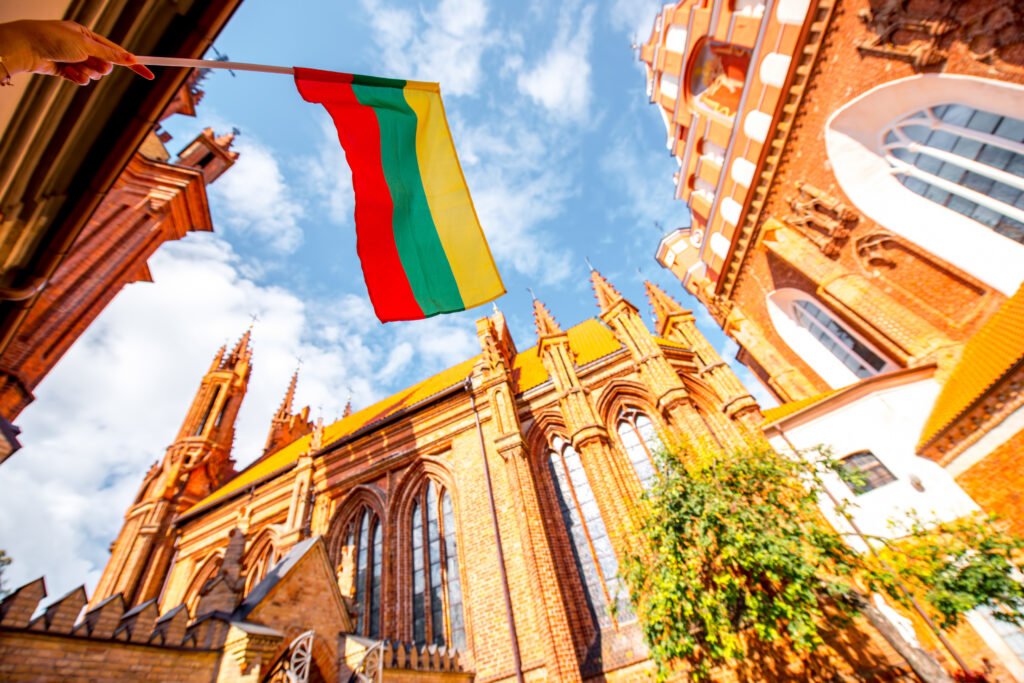
- In 1994, the Old Town of Vilnius was added to the UNESCO World Heritage List. There are 40 churches in Vilnius, the most impressive of which are the Baroque Church of St. Peter and Paul in Antakalnis (1668–1676), containing over 2,000 sculptures, and the Chapel at the Gate of Dawn (Mednica Gate), with its famous painting of Our Lady of the Gate of Dawn. The city lies on the European Route of Brick Gothic.
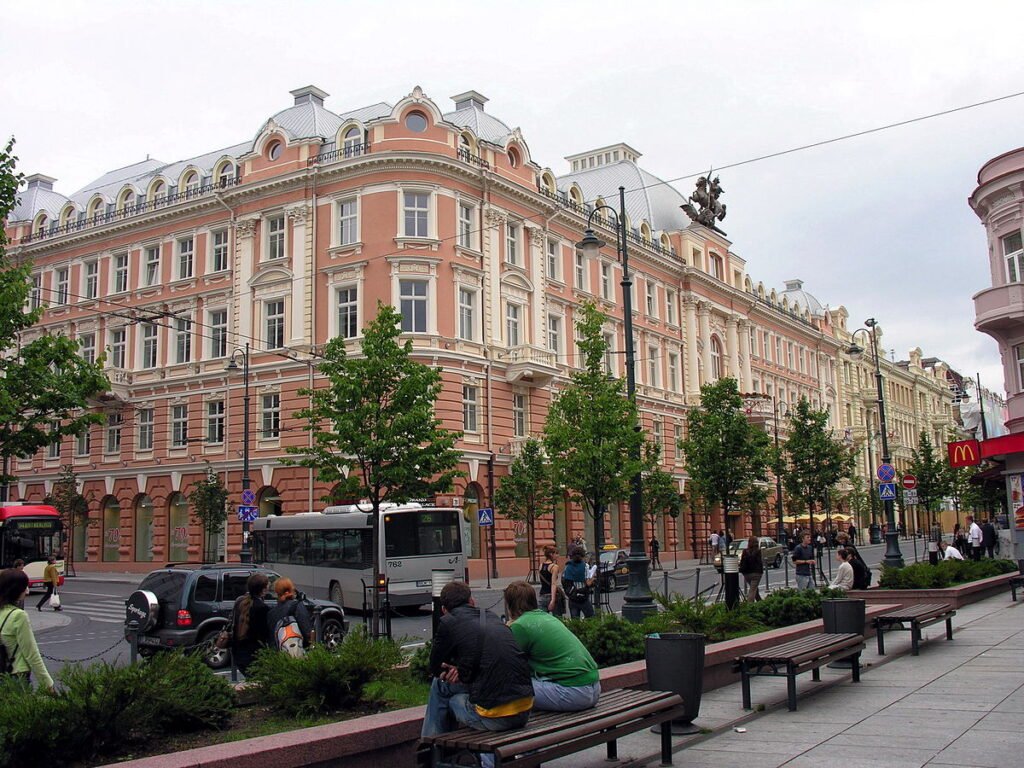
- Gediminas’ Tower is the western tower of the Upper Castle in Vilnius, built in the Gothic style on Gediminas Hill in 1409 during the reign of Duke Vytautas (therefore, the tower’s connection with Gediminas is not strictly speaking). The brick castle replaced a wooden stronghold that existed in the 14th century during Gediminas’ reign. In 1419, the castle burned down but was rebuilt. From the time of Alexander Jagiellon, the Upper Castle housed a bell foundry and a prison in the dungeons. Sigismund II Augustus renovated the castle and placed his library there. From 1655 to 1661, the castle was occupied by the Russians. Over time, the stronghold fell into ruin. Only the tower, known as Gediminas’ Tower, remains today. In 1830, a wooden superstructure for an optical telegraph was built on the surviving framework of the tower, which was removed around 1930. In 1938–1939, Polish conservators secured the tower for renovation and reconstructed the third brick floor. On September 20, 1939, the Russians removed the Polish flag from the tower and allowed the Lithuanian flag to be flown in its place on October 27. Around 11 a.m. on July 13, 1944, after Operation Ostra Brama, during which the Germans were driven out of Vilnius, Home Army soldiers, Officer Cadet Jerzy Jensz “Krepdeszyn” and Corporal Artur Rychter “Zan,” hung a white-and-red flag on the tower, which was quickly removed by the new occupiers, replacing it with the Soviet flag. During the war, the highest, third floor was partially destroyed. During the Lithuanian SSR, the tower underwent further renovations between 1948 and 1950. Since 1990, the flag of independent Lithuania has flown from the tower’s summit.
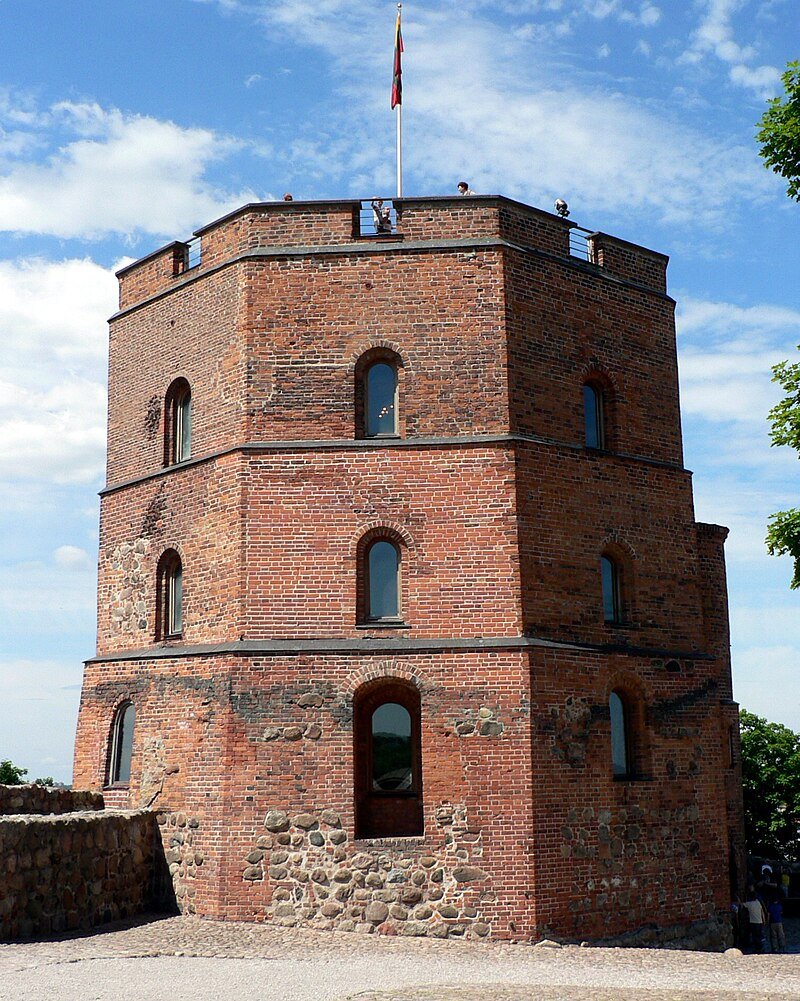
- The Church of St. Michael the Archangel and the Bernardine Monastery in Vilnius – a former Roman Catholic church, the city’s only Renaissance church. Currently home to the Lithuanian Religious Heritage Museum. Despite the devastation after 1945, the church’s interior retains the following:
- The tombstone of Lew Sapieha and his wives, Elżbieta née Radziwiłł and Dorota née Firlej – to the right of the main altar;
- The tombstone of Jan Stanisław Sapieha – above the sacristy door;
- The tombstone of Teodora Krystyna Tarnowska, erected by her husband Kazimierz Leon Sapieha around 1652 (designed by Giovanni Battista Gisleni and Francesco de Rossi).
- The epitaph of Krzysztof Mikołaj Sapieha – staircase of the former monastery. Until 1945, the church housed a painting of Mary and Child adored by St. Francis of Assisi and St. Bernardine of Siena, known as the Sapieha or St. Michael’s Virgin Mary. It was transferred from the Bernardine Church, where it had been renowned for graces and miracles since the 16th century. Its veneration was officially confirmed in 1699. On September 8, 1750, it was crowned by Bishop Michał Jan Zienkowicz with crowns sent by Pope Benedict XIV. Currently, the painting is located in Vilnius Cathedral. Furthermore, beneath the church lies a crypt containing the coffins of the Sapiehas and Dorota Siedleczyńska, the order’s superior, who was murdered by Muscovite soldiers in 1655.
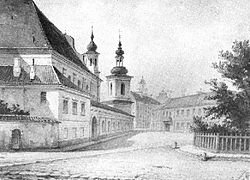
- Vilnius University – a state university in Vilnius, founded in 1579 by King Stephen Báthory as the Vilnius Academy and University of the Society of Jesus; after the dissolution of the Society of Jesus (1773) nationalized and reformed by the Commission of National Education; in the Second Polish Republic in the years 1919–1939 Stephen Báthory University; the third university established on the lands of the Polish-Lithuanian Commonwealth (the second was Albrecht University in Königsberg, which received a privilege from King Sigismund Augustus on 28 March 1560) and one of the oldest universities in Eastern and Northern Europe; currently, the Lithuanian University bears this name.
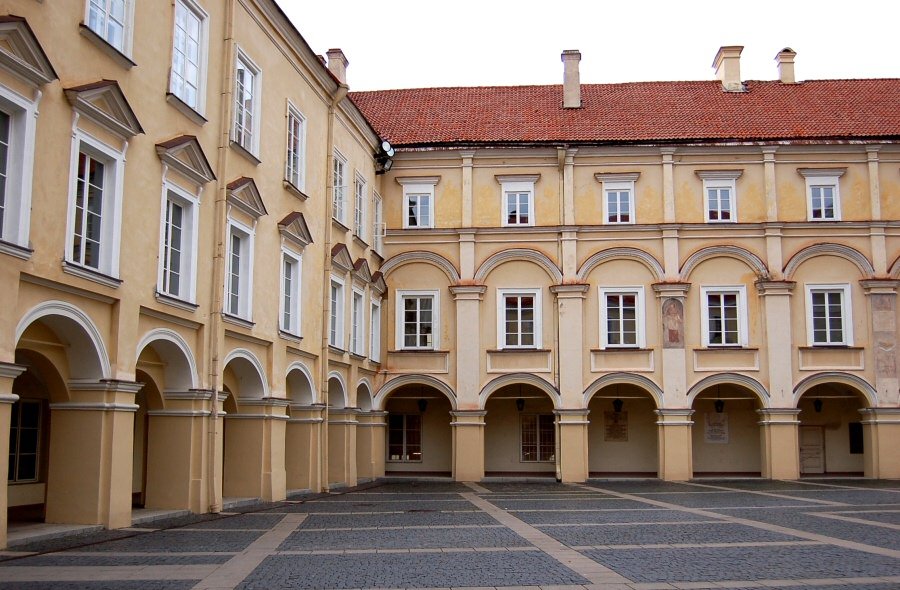
- Verkiai Palace – a classicist palace in Verkiai, the northern administrative district of Vilnius, nestled in a picturesque park on a hill above the Neris River, the work of Vilnius architect Wawrzyniec Gucewicz. Life flourished in the rebuilt residence during the reign of Prince Ludwig Wittgenstein, reminiscent of Massalski’s time. Famous “festivals” were held there for the Vilnius elite and neighbors from the surrounding courts. Prince Wittgenstein died in 1866. After some time, the palace began to deteriorate again, changing owners several times from the turn of the 20th century. The palace’s furnishings were sold off, and the garden was also devastated. After World War II, the palace was nationalized, and in 1959 it was transferred to the Academy of Sciences of the Lithuanian SSR. In the 1960s and 1970s, the palace and the buildings in the park were gradually restored. Today, it houses the Institute of Botany of the Lithuanian Academy of Sciences, and visitors can visit the interiors, decorated in the 19th-century style, including the beautiful Great Hall. Today the park has only 36 hectares.
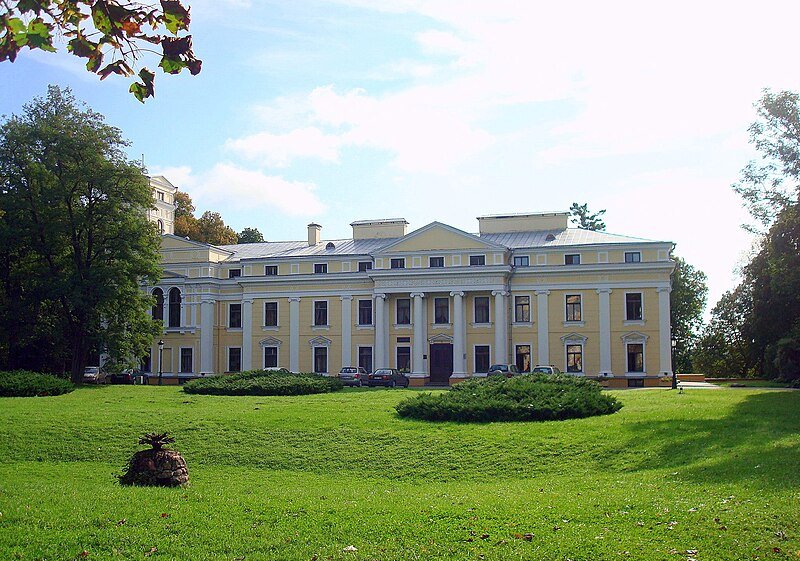
- The Choral Synagogue – a synagogue located in Vilnius, at 39 Zawalna Street. It is the only one of nearly 130 Jewish houses of prayer (synagogues and kloyz) in Vilnius that survived the Holocaust and is still active.
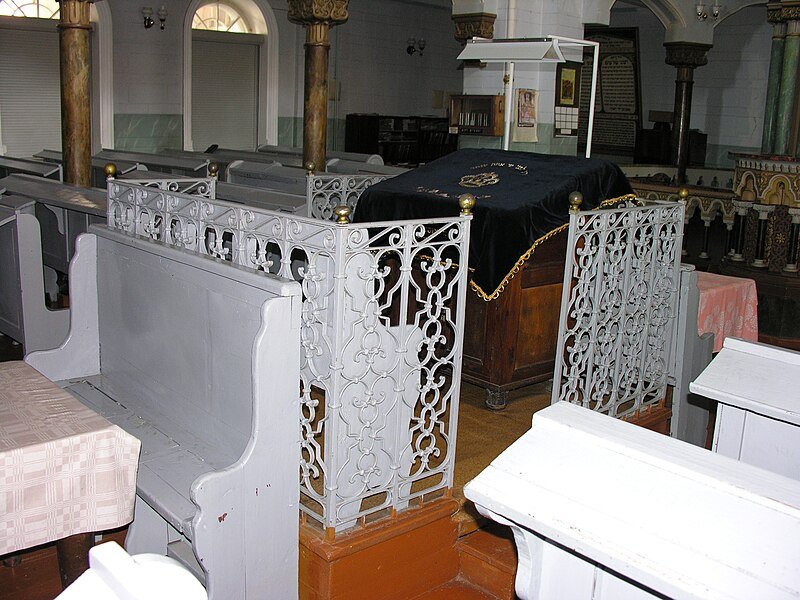
- The Church of Saints Constantine and Michael, full name: Church of the Holy Equal-to-the-Apostles Tsar Constantine and St. Michael Malein, commonly known as the Roman Catholic Church, is an Orthodox church built in 1913 in Vilnius on Jono Basanavičiaus Street, on Bouffalov Hill, one of the highest points of Vilnius. It is the seat of a parish. The church’s builders were inspired by the style of similar buildings in Suzdal and Rostov, while the interior is maintained in the Old Russian style. The building’s exterior is richly decorated, featuring a motif of three columns grouped together above semicircular windows, forming archivolts. The entrance to the church leads through a portal in a similar style. Stucco decoration is placed beneath each of the five green-painted domes. The church is built of yellow brick and has a Greek cross plan.
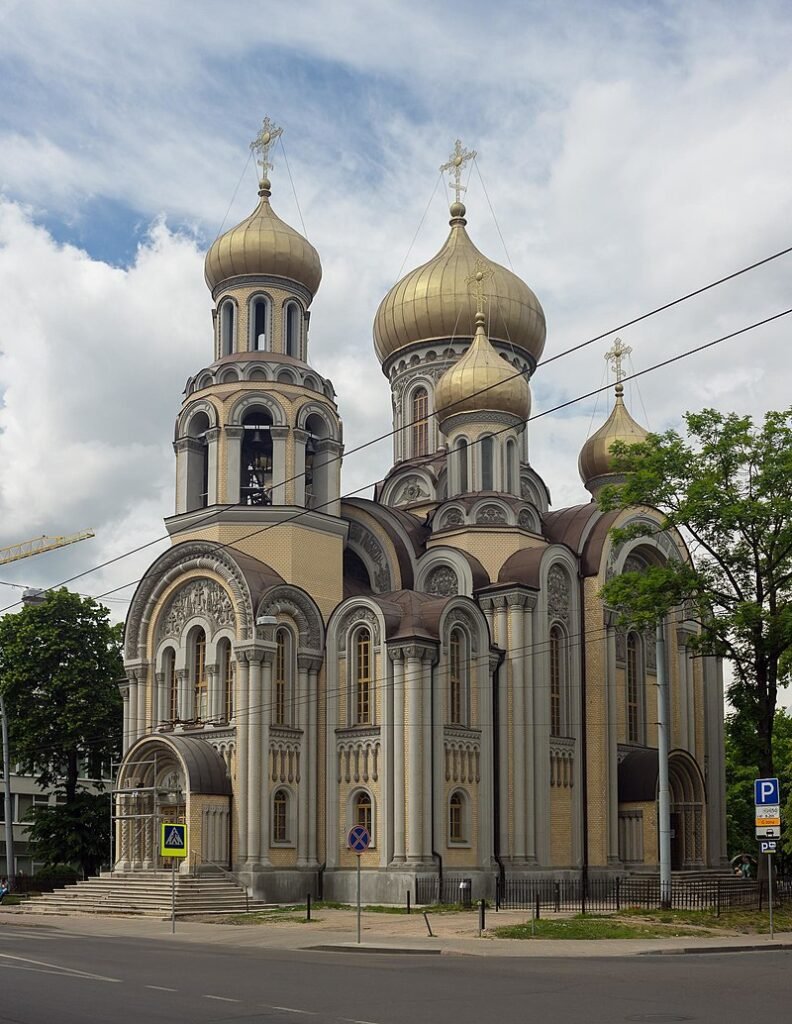
- Three Crosses Mountain. According to legend, seven Franciscans were martyred on Bald Mountain during the reign of Algirdas. Four were thrown into the Vilnius River, while three crosses bearing the bodies of the martyrs were placed on the mountain. To commemorate their martyrdom, Kosman reports that between 1613 and 1636, the Franciscans of Vilnius erected three wooden crosses on Bald Mountain. In 1740, the decayed crosses were replaced with new ones, which survived until 1869. When they collapsed due to age, the Russian authorities refused to allow their reconstruction. Only in 1916, during the German occupation, at the initiative of Prelate Kazimierz Michalkiewicz, funds were raised and concrete crosses designed by Antoni Wiwulski were erected. The legend of the martyrdom of the Franciscans has not been confirmed by historical sources. In 1927, Vilnius historian Kazimierz Chodynicki published his work “The Legend of the Martyrdom of the 14 Franciscans in Vilnius,” in which he claims they are legendary figures, much like the Orthodox martyrs of Vilnius. The three crosses survived until May 30, 1950, when they were blown up. Some of the ruins were removed, and larger fragments were buried. In 1989, the Lithuanian people decided to rebuild the crosses as a memorial to the victims of Stalinism in Lithuania. Rebuilt within 14 days, the Three Crosses Monument was unveiled on June 14, 1989. It was consecrated by Cardinal Vincentas Sladkevičius. Some of the excavated remains of the old crosses were bricked up in the foundations, while others are visible below the monument. The new crosses are identical to the Wiwulski monument, only 1.8 meters higher. Currently, the Hill of Three Crosses is located within the Upper Park (Kalnų Parkas).
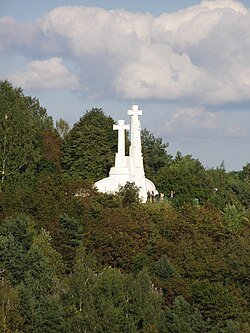
- The House of St. Faustina in Vilnius – a wooden building from the early 20th century, the site of St. Faustina Kowalska’s apparitions, located in the Antakalnis district of Vilnius, at Grybo Street 29A. In 1908, the Congregation of the Sisters of Our Lady of Mercy purchased land in the Antakalnis district from Russian General Bykovsky to serve as their headquarters. Several wooden buildings were erected, of which only one, a wooden, multi-room building, survives today. From 1933 to 1936, Sister Faustina, canonized in 2000, lived there and wrote her Diary. Here she experienced a number of visions, including the most famous one, during which Jesus Christ revealed the Chaplet of Divine Mercy to her. After 1945, the order was removed from the property, and all the buildings were demolished, replacing them with a kindergarten. Only the House of St. Faustina, which houses a memorial room for the saint, remains. In January 2004, two reliquaries containing the relics of St. Faustina were brought from Rome; one was placed in the chapel, the other, in the shape of a silver medallion, was placed on a wooden cross in front of the building. St. Faustina’s House is now a destination for numerous pilgrimages.
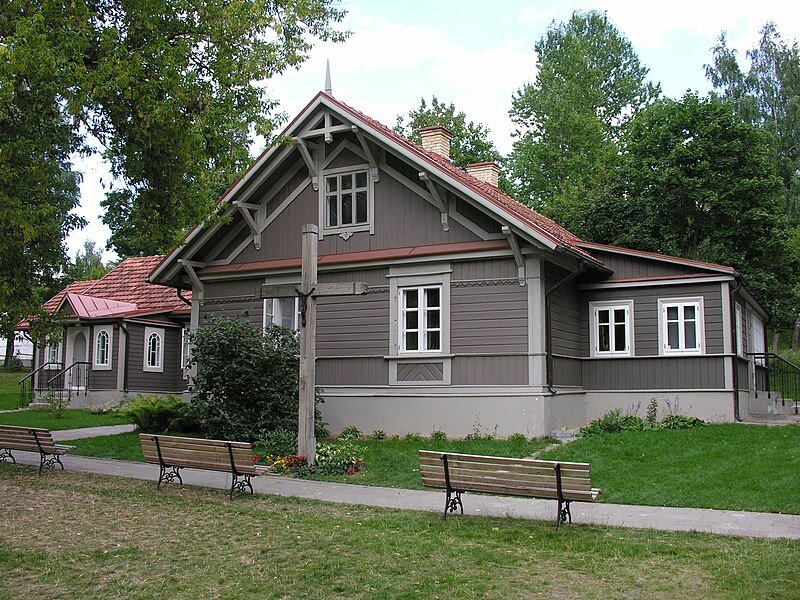
- The Rasos Cemetery (Rasos Missionaries’ Cemetery, Lithuanian: Rasų kapinės) is a historic cemetery complex in Vilnius, on the Rasos Cemetery, covering an area of 10.8 hectares. The Rasos Cemetery is one of four Polish national necropolises. The cemetery complex includes Old Rasos (1769/1801), New Rasos (1847), the Military Cemetery (1920), and the Mother and Son Heart mausoleum.
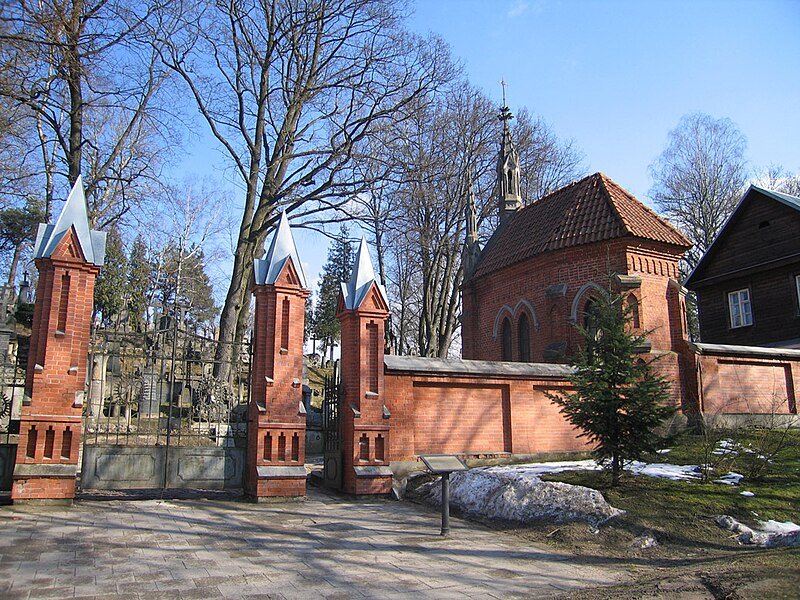
- The Vilnius Kenesa is a Karaite kenesa located at 6 Liubarto Street in the Zwierzyniec district of Vilnius. The kenesa was built between 1913 and 1922 for the then-large Karaite community in Vilnius, according to the design of Russian architect Mikhail Prozorov, on the site of a former wooden kenesa. Some believe the kenesa’s architecture was modeled on the Royal Pavilion in Brighton, Great Britain (architect John Nash, 1815–1821). The years of World War I halted construction. The ceremonial consecration and opening of the kenesa in Vilnius took place on September 9, 1923, by Hazzan Feliks Malecki, who served as the head of the religious community of the Vilnius Karaites. After the end of World War II, in 1949, at the behest of the then city authorities, the kenesa was closed. In 1989, it was reclaimed by the reviving Karaite community. A ceremonial service, attended by Hazzan Michał Firkowicz, took place on March 9, 1989. However, much of the original furnishings were missing. The gilded cypress altar was gone. Also missing were the Persian carpets, the analoye (tables for prayer books and other items), the altar curtains, the altar and side candlesticks, two chandeliers, and the wooden benches. The candlesticks hanging today were donated by the Karaites of Galicia. They were removed in time before their kenesa was demolished.
